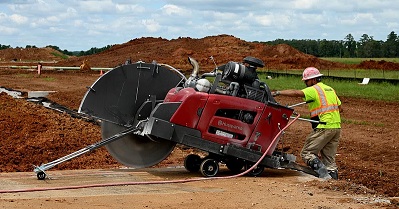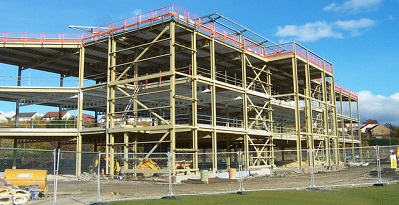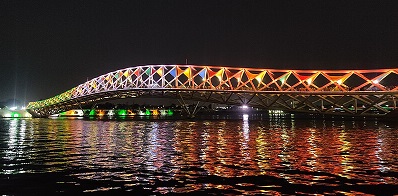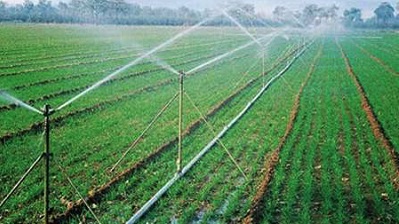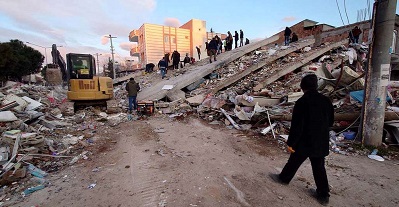Table of Contents
Civil Interview Questions
When you apply for a civil engineer’s job in a government sector or a private company, you should have in-depth practical and theoretical knowledge about civil engineering. Here we have provided numbers of questions that boost your confidence in any civil interview and help you to prepare answers.
Most civil interview questions are based on technical field. Here we have provided all interview questions subject wise so you can understand very well and it will be easy for you to find answers easily for any subjects.
General Civil Interview Questions
What is civil engineering ?
Civil engineering is the branch of engineering which deals with designing, planning, managing and executing structural works like roads, bridges, dams, canals, buildings, power plants, sewerage system, aqueducts and other infrastructures.
Who is the father of civil engineering in world?
John Smeaton is the father of civil engineering in world.
Who is the father of engineering in India?
Sir Mokshagundam Visvesvaraya, an Indian civil engineer, administrator and statesman is the “Father of Engineering” in India.
Who is the Indian god of civil engineering?
God Vishvakarma is the Indian god of civil engineering.
Why government job ?
As an Indian citizen, this is a great opportunity to serve my country. Because, government sector is mostly for public services. So we can serve public indirectly through Govt. Also in government services, we can show our skills or ideas and help to make the country a developed nation by increasing the revenue of the government.
I want to put my skills and time to good use and work with other like-minded officers who all have the same objective and can do welfare work for the society.
Why is a government job better than a private job?
Government job provides better work-life balance, medical benefits, less work pressure, pension plans, paid vacations, better salaries, long-term job security, guaranteed promotion which is not provided in private sectors so, government job is better than a private job.
Building Materials Civil Interview Questions
Which cement is best suitable for sea water?
Sulphate-resisting cement is best suitable for marine works or sea water.
Which cement is best suitable for under water construction?
Pozzolana cement is best suitable for underwater construction. Because It is extremely water resistant.
What is the weight of a standard brick in India?
According to Indian practice the weight of a standard brick is between 3- 3.5 kg.
How many bricks in one truck in India?
A truck can carry 4000 bricks in India.
Soil Mechanics Civil Interview Questions
What is Soil ?
Soil is a loose grainy material that covering the surface of the earth. It consists mixture of organic matters, weathered rocks, inorganic matters, minerals, liquids and gases. Soil is formed by weathering of rocks likes Chemical Weathering, Biological Weathering or Mechanical Weathering.
What is Sandy Soil ?
Sandy soil is a coarse grained cohesionless soil which particles size is greater than clay soil and silt. Sandy soil is formed due to weathering action of rocks like limestone, quartz and granite. The size of Sand particles are between 0.075 mm to 2 mm in diameter.
What is the meaning of soil liquefaction?
During an earthquake or other sudden change in stress condition, cohesionless saturated or partially saturated soil substantially loses strength and stiffness, this phenomenon is called soil liquefaction.
It most often observed in saturated, loose sandy soils. because a loose sand has a tendency to compress when a load is applied.
Liquefaction can cause severe damage, or even complete destruction of buildings and infrastructure.
What is Soil Mechanics ?
Soil mechanics is the branch of civil engineering which deals with study of physical properties of soil, hydraulic properties of soil, utilization of soils, mechanical properties of soil, behavior of soil, stability of soil, influence of soil, performance of structures on soil etc.
What is Loam Soil ?
Loam soil is a mixture of clay soil, silt and sandy soil. According to proportion of minerals, loam soil is divided into different types like clay loam, sandy loam, silty loam, sandy clay loam, silty clay loam etc. Generally It consists 40% silt minerals, 20% clay minerals and 40% sand minerals.
What is the significance of coefficient of curvature?
Coefficient of curvature represents the shape of the particle size distribution curve. The slope of the gradation curve of the soil gives the coefficient of curvature. It should lie between 1 and 3 for well-graded soil.
What is Clay Soil ?
Clay soil is a fine-grained natural soil which contains more than 30 percent fine clay particles. It shows high shrinkage and swelling characteristics during dry and wet conditions. Size of clay particles are smaller than 0.002 mm in diameter. It has a high plasticity characteristics and it is very sticky.
What is the significance of coefficient of uniformity?
It is used to distinguish between well-graded and poorly graded coarse-grained soil using results from laboratory tests of grain size distribution.
The higher the value of the coefficient of uniformity the larger the range of particle sizes. The smaller the coefficient of uniformity means smaller rang of particle size in the soil.
What is Silt ?
Silt is made up of mineral particles that are smaller than sand particles and larger than clay particles. It is a smooth and fine quality of soil which has medium plasticity characteristics and holds water better than sandy soils. The size of Silt particles are between 0.002 to 0.075 mm in diameter.
What are the 4 types of soil?
There are four types of soil like clay soil, silt, sandy soil and loam soil. Sandy soil is a coarse grain cohesionless soil while clay soil and silt soil is a fine grain cohesive soil. While loam soil is a mixture of clay soil, silt and sandy soil.
Foundation Engineering Civil Interview Questions
What are the types of foundation?
Various types of foundations are Shallow Foundations, Deep Foundations, Strip Footings, Individual Footings, Combined Footings, Pile Foundations etc.
RCC Structure Civil Interview Questions
What is the difference between load bearing structure and framed structure?
In load bearing structure all loads taken by walls and transferred to the soil. While In framed structure all load taken by the beams and columns and transferred to the footing and foundation of the structure.
Steel Structure Civil Interview Questions
What are the properties of steel?
Steel has a various properties like toughness, hardness, yield strength, tensile strength, elongation, plasticity, fatigue strength, malleability, corrosion and creep.
Building Construction Civil Interview Questions
What are the type of stairs ?
There are various type of stairs like Straight Stairs, U Shaped Stairs, Spiral Stairs, Cantilever Stairs, L Shaped Stairs, Winder Stairs, Curved Stairs, Split Staircase (Bifurcated stair) etc.
Transportation Engineering Civil Interview Questions
What is Perception time in PIEV Theory?
When driver instantly see any objects, so he/she receives the sensations by the eyes or ears and transmits the message to the brain through the nervous system & spinal cord. This time is called perception time.
What are the factors affecting total reaction time of driver?
Various factors affecting total reaction time of driver are Travel speed, Type of Problems, Alcohol Consumption, Characteristics of drivers, Motive of the trip and Condition of drivers.
What is Intellection time in PIEV Theory?
When brain receives the message, it understands the situation, comparing the different thoughts and registering new sensations. This time is called intellection time.
What is the maximum/ruling gradient value for roads?
IRC recommended 1 in 30 for plain and rolling terrain, 1 in 20 for mountainous (hilly) terrain and 1 in 16.7 for steep terrain.
What is Emotion time in PIEV Theory?
Emotion time of driver is the time elapsed during emotional feelings likes, fear, superstition, anger. Its depends on the drivers and problems.
What is the full form of PIEV in PIEV Theory?
PIEV means Perception, Intellection, Emotion and Volition respectively.
What is Volition time in PIEV Theory?
Volition time is the final decision time. In this case driver apply the brakes or avoid the situations depending on the situations.
What is total reaction time of driver in PIEV Theory?
Time taken between the instant object is visible to the driver and the instant brakes are effectively applied is called PIEV time or Total Reaction time of driver. for overtaking sight distance it is 2 sec and For stopping sight distance it is 2.5 sec.
Bridge Engineering Civil Interview Questions
What is the purpose of the pier cap in bridge?
Pier cap equally distribute the dead and live loads on the pier and abutments. If we not provide a pier cap it will affect the equal distribution of load which leads to bridge failure.
Structural Analysis Civil Interview Questions
Why is structural analysis important ?
structural analysis is very important because, it deals with calculation of load coming on the structure, also analyzing loads, its determine the cause of a structural failure, it determine whether a structural design will be able to withstand internal stresses and external forces, its also determine the behaviour of a structure under the loads and combinations of loads.
Solid Mechanics Civil Interview Questions
What is bending stress ?
When external bending moment or force is applied, the internal resistance generated within a body. This internal resistance due to bending moment is called bending stress.
Environmental Engineering Civil Interview Questions
What is Drinking Water ?
Drinking water also known as Potable water. It is a water which meets Indian water quality standards. It should not contain undesirable Substances, Bacteria, Lead, harmful microbes, Toxic Substances, Pathogens, Radioactive Substances and other harmful Substances.
Minimum TDS level in drinking water ?
For drinking water, the Bureau of Indian Standards (BIS) recommended 500 mg/l acceptable limit of TDS (Total Dissolved Solids). However, The BIS also recommended 2000 mg/l permissible limit in absence of alternate source for TDS for drinking water.
What is Indian Standard For Drinking Water ?
Indian Standard For Drinking Water was adopted by the Bureau of Indian Standards (BIS) which was first published in 1983. This standard specifies the acceptable limit and the permissible limit in the absence of alternate source. This standard also prescribes the requirements and the methods of sampling and test for drinking water.
Is code for drinking water standards ?
Indian Standard code For specifications of Drinking Water is IS 10500 : 2012
Irrigation Engineering Civil Interview Questions
What is meandering river?
When river flows in a curvy, bendy path, like a snake or S-curve, it is called meandering river.
Hydrology Civil Interview Questions
What is the role of hydrology in civil engineering ?
Hydrology deals with planning and management of water resources as well as water-related issues in civil engineering like water quantity, flood control, rainfall measurement, irrigation, mitigation of flood, evapotranspiration, precipitation, Infiltration, condensation, water cycle, groundwater flow, streamflow etc.
Surveying Civil Interview Questions
What is surveying in civil engineering ?
Surveying deal with plans, mapping, land survey, Cadastral Surveying, geology, topographic features, GIS, land boundaries, Cartography, determine the position of natural and man-made objects, Photogrammetry, Digital Mapping, levelling of lands, determining the relative position of different points related to others, remote sensing etc.
What is true bearing and magnetic bearing ?
True bearing is the angle measured in clock wise direction from true meridian’s north. True bearing is an accurate way of measuring direction of any place in relation to another. It is more accurate than direction because it gives 360 degree points.
While magnetic bearing is the angle measured in clock wise direction from magnetic meridian’s north. its vary with time to time and place to place and Its depend on magnetic field of the earth.
What is intersection method of plane table surveying ?
Intersection method is mostly useful where it is not possible to measure the distances on ground like obstruction of a mountains or rivers . Hence, this method is used for locating inaccessible points.
What is theodolite and total station ?
Theodolite is a precision optical instrument which is used for measuring horizontal and vertical angles. While total station is a digital electronic instrument which consists a electronic display for readings, optical plummet for centering and EDM for distance measurement.
What are the methods of plane table surveying ?
There are 4 methods in plane table surveying, Radiation method, Traversing method, Intersection method and Resection method.
What is the theodolite price ?
Theodolite available in market are of different prices. Minimum price of one piece is 4500/- Rs. and maximum 170000/- Rs. Minimum price of one whole set is 13500/- Rs. and maximum 233000/- Rs.
What is traversing method of plane table surveying ?
Traversing method of plane table surveying is generally used to plot a traverse. In this method, first of all traverse stations are selected. Then by radiation method, all stations are plotted by taking a fore sight to the following station and back sight on the previous station.
What is the difference between true bearing and magnetic bearing ?
True bearing is the angle measured in clock wise direction from true meridian’s north. It is a fixed angle and does not vary with time. It is more accurate than direction because it gives 360 degree points. While magnetic bearing is the angle measured in clock wise direction from magnetic meridian’s north. Its depend on magnetic field of the earth and its vary with time to time and place to place.
What is the principle of plane table surveying ?
Main principle of plane table surveying is Parallelism. Parallelism means all the rays drawn during plotting of map should be always parallel to actual ground lines from object point to station point and all the rays should pass through the survey station.
Theodolite is an instrument used for ?
Theodolite is used for measuring angles in the horizontal and vertical planes. It is mainly used for surveying applications. But it also used in other areas like metrology, rocket launch technology, for setting out grades, for tacheometric survey, for large scale survey areas, for setting out curves, for level difference etc.
What are the parts of a theodolite ?
Theodolite consists Tripod, Telescope, Eye piece, Object piece, Plate level, Upper plate, Lower plate, Magnetic compass, Levelling head, Horizontal circle, Vertical circle, Shifting head, Levelling screw, Trivet, Tripod head, Plumb bob, Index frame, The standards, Altitude bubble, Tripod leg,, Inner spindle, Outer spindle Tangent screw, Foot screw, Vernier etc. parts.
What is radiation method of plane table surveying ?
In the radiation method, instrument is set up at a single station point, from where all the object points should be clearly visible which are to be plotted. Then rays are drawn from the instrument station to the object points which are to be plotted.
What is theodolite surveying ?
Theodolite surveying is the branch of surveying in which theodolite instrument is used to measure the vertical and horizontal angles. By using compass we can only measure horizontal angles which gives less accuracy. But, by theodolite surveying we can measure both vertical and horizontal angles with greater accuracy.
Which instruments are used in plane table surveying?
Plane table, tripod, alidade, through compass, plumbing fork, drawing sheet, drawing accessories, clips etc. instruments are used in plane table surveying.
What is transit and non transit theodolite ?
Transit theodolite includes transit mechanism that allow the telescope to rotate about 180° in vertical plane about horizontal axis and lock into place when the instrument is level. That means directing the telescope in exact opposite direction.
While non-transit theodolite not includes transit mechanism that allow the telescope to rotate about 180° in vertical plane about horizontal axis and lock into place when the instrument is level. That means we can not directing the telescope in exact opposite direction.
What are the objectives of plane table surveying ?
Main objectives of plane table surveying are To carry out small scale surveying very quickly, To locate the topographical features, To establish control points for future surveys, To measures distance and angles between different object points and then relative position of that object points can be determined etc.
What is theodolite ?
Theodolite is a precision optical instrument which is used for measuring angles in the horizontal and vertical planes. It is used for various purposes likes for setting out curves, finding level difference and for other specialized works.
What are the uses of theodolite in surveying ?
Theodolite is used for different purposes like For electronic distance measurement, For setting out of curves, For finding the difference in the level, For prolonging survey lines, For specialized purposes like meteorology and rocket launch technology, For tachometric surveying, For measuring horizontal angle as well as vertical angles, For setting out grades etc.
What is resection method of plane table surveying ?
Resection method of plane table surveying is generally used to locate and plot the position of the plane table during surveying. This is also used for the orientation of the plane table.
Construction Project Management Civil Interview Questions
What is CPM and PERT in civil engineering ?
CPM is a statistical technique of project management which is known as Critical Path Method in which planning, scheduling, organizing and controlling of well-defined activities are done. While PERT is a project management technique which is known as Program Evaluation and Review Technique, in which planning, scheduling, organizing and controlling of uncertain activities are done.
Earthquake Engineering Civil Interview Questions
What are the 4 types of earthquakes ?
There are four types of earthquakes: tectonic, collapse, volcanic and explosion.
Also Visit :
➤ Download Our App For More Articles
➤ Soil Mechanics MCQs Practice
➤ Civil Engineering MCQs Practice
➤ Building Materials MCQs Practice
➤ Civil Engineering Previous Year Papers
➤ Civil Engineering Study Materials
➤ Indian Standard For Drinking Water (IS 10500 : 2012)


